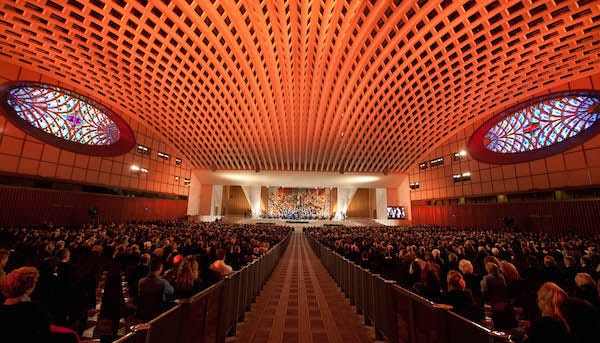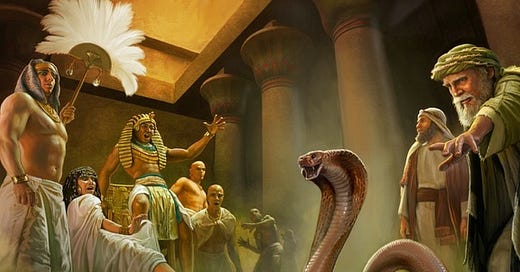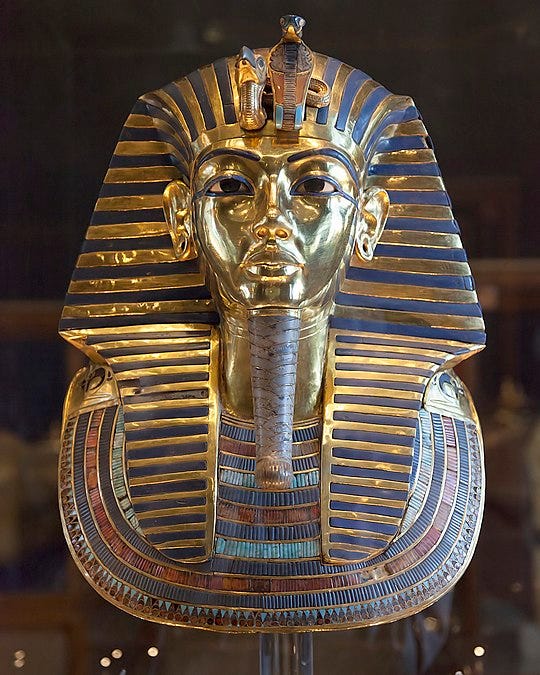The Burden of Egypt, a Symbol of the World
The burden of Egypt. Behold, the LORD rideth upon a swift cloud, and shall come into Egypt: ...
Introduction
In the Bible, Egypt is most likely remembered for the showdown between Moses and Pharaoh leading to the departure of the children of Israel, the Exodus. While these events were literal, they have an application in our day. Solomon tells us in Ecclesiastes 1:9 that there is no new thing under the sun; the thing that hath been, it is that which shall be. The sacred transactions of Egypt are ensamples and for our admonition upon whom the ends of the world are come. Egypt is a symbol of bondage for God’s people. When Moses brought forth the children of Israel out of Egypt, this was a type or pre-figure of Christ bringing us out of the bondage of sin. The showdown between Moses and Pharaoh in many aspects is prophetic and repeats at the end of the world. It is part of the great controversy between Christ and Satan. There were seven final plagues that affected only the Egyptians (the first three affected all of Egypt) and at the end of the world, there will be seven last plagues that will affect only those who have received the mark of the beast. Let us take a closer look at how Egypt is used as a symbol of the world.
The House of Bondage
3 And Moses said unto the people, Remember this day, in which ye came out from Egypt, out of the house of bondage; for by strength of hand the LORD brought you out from this place: there shall no leavened bread be eaten. 4 This day came ye out in the month Abib. Exodus 13
1 Now I say, That the heir, as long as he is a child, differeth nothing from a servant, though he be lord of all; 2 But is under tutors and governors until the time appointed of the father. 3 Even so we, when we were children, were in bondage under the elements of the world: Galatians 4
Egypt is referred to as the house of bondage. Similarly, the world keeps us in bondage under its elements. What are these elements? The lust of the flesh, the lust of the eyes and the pride of life. These are the avenues of sin. Therefore, the bondage of this world is as Egyptian bondage.
15 Love not the world, neither the things that are in the world. If any man love the world, the love of the Father is not in him. 16 For all that is in the world, the lust of the flesh, and the lust of the eyes, and the pride of life, is not of the Father, but is of the world. 17 And the world passeth away, and the lust thereof: but he that doeth the will of God abideth for ever. 1John 2:17
A Dragon Power
3 Speak, and say, Thus saith the Lord GOD; Behold, I am against thee, Pharaoh king of Egypt, the great dragon that lieth in the midst of his rivers, which hath said, My river is mine own, and I have made it for myself. Ezekiel 29.
4 And they worshipped the dragon which gave power unto the beast: and they worshipped the beast, saying, Who is like unto the beast? who is able to make war with him? Revelation 13
Pharaoh, king of Egypt, is called a great dragon. In Revelation, the dragon gives power to the beast. We are told in Revelation that the great dragon is Satan. However, Satan does not appear himself, physically, to carry out his intentions, rather he works through civil and religious powers. For example, in Egypt, Pharaoh sought to kill all the Israelite children. In this act he was inspired by Satan, the dragon power. This was an attempt to prevent Moses from saving the Israelites from Egyptian bondage. Similarly, in the first Advent of Christ, Herod killed babies under two years in an attempt to prevent the work of the Messiah - which is to save us from the bondage of sin. In both these cases, it is the dragon behind the human agents (kings or civil powers). Therefore in a secondary sense, we understand the dragon to be the civil powers at the end of the world. These will give their power to the beast and are represented as ten kings.
12 And the ten horns which thou sawest are ten kings, which have received no kingdom as yet; but receive power as kings one hour with the beast. 13 These have one mind, and shall give their power and strength unto the beast. 14 These shall make war with the Lamb, and the Lamb shall overcome them: for he is Lord of lords, and King of kings: and they that are with him are called, and chosen, and faithful. 15 And he saith unto me, The waters which thou sawest, where the whore sitteth, are peoples, and multitudes, and nations, and tongues. 16 And the ten horns which thou sawest upon the beast, these shall hate the whore, and shall make her desolate and naked, and shall eat her flesh, and burn her with fire. 17 For God hath put in their hearts to fulfil his will, and to agree, and give their kingdom unto the beast, until the words of God shall be fulfilled.
Interestingly, the scriptures also mention ten geographical centres of ancient Egypt.
A Woman Upon the Beast
9 When Pharaoh shall speak unto you, saying, Shew a miracle for you: then thou shalt say unto Aaron, Take thy rod, and cast it before Pharaoh, and it shall become a serpent. 10 And Moses and Aaron went in unto Pharaoh, and they did so as the LORD had commanded: and Aaron cast down his rod before Pharaoh, and before his servants, and it became a serpent. 11 Then Pharaoh also called the wise men and the sorcerers: now the magicians of Egypt, they also did in like manner with their enchantments. 12 For they cast down every man his rod, and they became serpents: but Aaron’s rod swallowed up their rods. Exodus 7
In Egypt, the serpent was a symbol of a deity, specifically a goddess. Upon Pharaoh’s crown, the symbol of a goddess by the name of Widget was depicted. Essentially, we have a “woman” sitting as it were upon Pharaoh, a civil power.
The Uraeus is a symbol for the goddess Wadjet.[2] She was one of the earliest Egyptian deities and was often depicted as a cobra, as she is the serpent goddess. The center of her cult was in Per-Wadjet, later called Buto by the Greeks.[3] She became the patroness of the Nile Delta and the protector of all of Lower Egypt.[4] The pharaohs wore the uraeus as a head ornament: either with the body of Wadjet atop the head, or as a crown encircling the head; this indicated Wadjet's protection and reinforced the pharaoh's claim over the land. In whatever manner that the Uraeus was displayed upon the pharaoh's head, it was, in effect, part of the pharaoh's crown. The pharaoh was recognized only by wearing the Uraeus, which conveyed legitimacy to the ruler. There is evidence for this tradition even in the Old Kingdom during the third millennium BCE.[5]
Interestingly, at the end of the world there is also a woman riding upon a beast and associated with the serpent symbol.
3 So he carried me away in the spirit into the wilderness: and I saw a woman sit upon a scarlet coloured beast, full of names of blasphemy, having seven heads and ten horns. 4 And the woman was arrayed in purple and scarlet colour, and decked with gold and precious stones and pearls, having a golden cup in her hand full of abominations and filthiness of her fornication: 5 And upon her forehead was a name written, MYSTERY, BABYLON THE GREAT, THE MOTHER OF HARLOTS AND ABOMINATIONS OF THE EARTH. KJV — Revelation 17

9 And here is the mind which hath wisdom. The seven heads are seven mountains, on which the woman sitteth. 18 And the woman which thou sawest is that great city, which reigneth over the kings of the earth. Revelation 17
We have established Egypt as a symbol of the world, and specifically, the end of the world. In a future study, we intend to look at this prophetic symbol in light of current world events.





